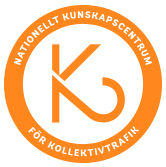The aim of this paper is to improve the knowledge of collaborative challenges when planning and implementing Bus Rapid Transit (BRT). Collaborative challenges are here understood as the barriers that may arise in BRT planning and implementation as a consequence of several formally independent actors, occasionally with different interests, participating in the planning. The results are based on an analysis of actor interactions in Swedish BRT projects. These projects are analysed in relation to the state of the art in the research field of collaborative approaches. The results show two main and interrelated collaborative challenges. The first category of challenges concerns difficulties for actors in creating a common understanding of what a BRT system is, the second category concerns details of bus priority measures, e.g. busways, priority at intersections, and how to handle and deal with conflicting interests when removing speed bumps or pedestrian and cycle crossings. In terms of policy is in the early stages of the planning processes. This can be generated by working practices and tools that facilitate agreements on how to handle different interests and trade-offs. BRT guidelines adapted to national transport policy, legal and organisational conditions could function as tools in assisting actor dialogue.
Collaborative challenges and barriers when planning and implementing Bus Rapid Transit (BRT): Lessons from Swedish BRT projects
Jakob Allansson, Fredrik Pettersson-Löfstedt & Robert Hrelja, Urban, Planning and Transport Research, Augusti 2023
Rapportkategori:
Vetenskapliga artiklar
Forskningsinriktning:
